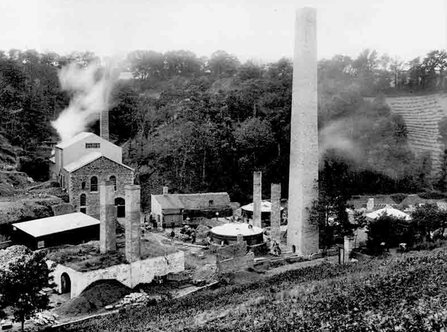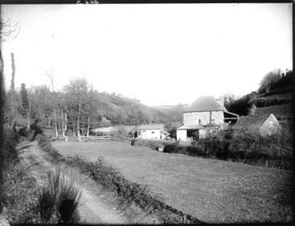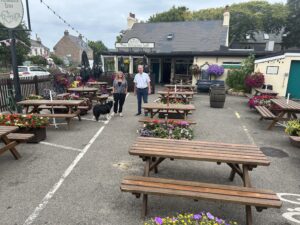
SINCE late 2015 each successive issue of RURAL is available to read in ‘virtual’ form, by clicking on the ‘Past issues’ section of this website. However, the earlier issues in the first three years of the magazine’s existence cannot now be accessed. We intend to put some of these ‘missing’ articles on the website so readers can read those articles that are still relevant today.
We start with an article on the history of Bellozanne Valley, by Marie-Louise Backhurst, which appeared in the Autumn issue of 2013. Today – April 2020 – the question posed in the article: The past and present of Bellozanne – is there a future? has contemporary relevance: in the past few days, part of the valley was blessed by Island faith leaders for a role as a mortuary in the event that existing facilities might not meet the Island’s needs as the coronavirus situation unfolds.
The question she poses, now that the incinerator and recycling station have moved, is also of relevance today: ‘Should there not be plans to improve the quality of the land and make it once again a green and pleasant land?’
Bellozane
The past and present of Bellozanne – is there a future? By Marie-Louise Backhurst
FOR many Jersey people, going to Bellozanne to drop off some rubbish [the recycling centre has since moved to La Collette – Ed] is a weekly ritual; there is no need to tell anyone why one is going. But how many of those people would know why it is called Bellozanne or what its connection is with a Crusade to the Holy Land over 800 years ago?
In 1190 Hughes de Gournay, a knight owning land on the far eastern boundary of Normandy with France, went to the Holy Land with Richard Coeur de Lion and was present at the siege of Acre. In gratitude for his safe return he established an Abbey which he called Notre Dame de Bellozanne – Our Lady of the Beautiful Hosanna. Also belonging to Hughes was a chapel of St Clair and a priory dedicated to St Aubin. In order to endow the new Abbey, John Count of Mortain, brother of King Richard, in 1197 gave a piece of land in Jersey to it. This land then became known as the fief of Bellozanne. Interestingly the charter gives the names of the people who lived there, including Robert de Ste Croix, whose descendants became strongly established here; there are still two fields called after a Rebecca de Ste Croix, who may have been born in 1625.
Hughes de Gournay wavered in his allegiance to the English Crown, but eventually he stayed loyal to King John. For his loyalty, he paid the price of losing his château in Normandy and had to take refuge temporarily in Jersey. He then settled on other lands that he owned in Norfolk, and the family he founded became known as the Gurneys, who were Quakers and bankers.

The fief of Bellozanne, which is in the parish of St Helier, is described in an early charter of 1200 as being to the south of the fief of Surville down to the sea to a bay called ‘Waltremble’; this could refer to an early earthquake. It is bounded on the west by the stream or Douet de Ste Croix, and on the east by the Douet Le Gallais. It consisted of 20 librates –which is about 1,000 vergées. There was a chapel, possibly that of St Clair, which was on the western boundary, an oxen house and the manorial stable. There was also a mill called le Moulin de Friquet, whose wheel was undershot. The common land of the fief is just to the south of where Overdale Hospital is now and where the gallows once stood.
The boundaries of the fief of Bellozanne are exactly those of the vingtaine of Mont à L’Abbé (the Mount of the Abbot), which suggests that vingtaines were created after 1200.
The land in Jersey, which had been donated to the Abbey, remained with it until about 1414, when all the possessions of alien (ie. non-English) religious houses were confiscated by the Crown and the fief of Bellozanne has remained in the hands of the Crown ever since.
As no seigneur lived on this fief it is unlikely that there was ever a Bellozanne Manor in order to collect the rents due to the Abbey, but there are two properties, Bellozanne Abbey and Bellozanne Priory, which may be where the rent collectors lived.
In 1754 Bellozanne Abbey was in the ownership of Mathieu de Ste Croix, possibly a descendant of the Robert who was there in 1200. It then passed to several owners until 1920 when it was bought by William Harrison Bailey, a men’s outfitter. His granddaughter, Adeline Mundy, a school teacher at the Jersey College for Girls Preparatory School, generously left the house to the National Trust for Jersey. It is believed that parts of it may date from the 14th century.
Bellozanne Priory was also owned by the de Ste Croix family and there was a date-stone of 1761 with the initials CDSX MLP on it. This represented Charles de Ste Croix and Madeleine Elizabeth Lemprière who were married in St Helier in 1750.
The Moulin de Friquet was the first industrial building in the valley and in 1884 the Rock and Brick Company was established by the Bryant brothers. Further industrialisation came after the Second World War when the States bought up fields for water treatment in 1957 and a pumping station in 1960. The water treatment facility now deals with 25,000 cubic meters of sewage every day. A scrap metal yard was established in 1980 and the States gradually built this up so that recycling could be undertaken there.
What was once a pretty valley with a mill and surrounding land now hides many of the essential, but unsightly, facilities which are needed to support a modern community. With the imminent removal of the incinerator, should there not be plans to improve the quality of the land and make it once again a green and pleasant land?




